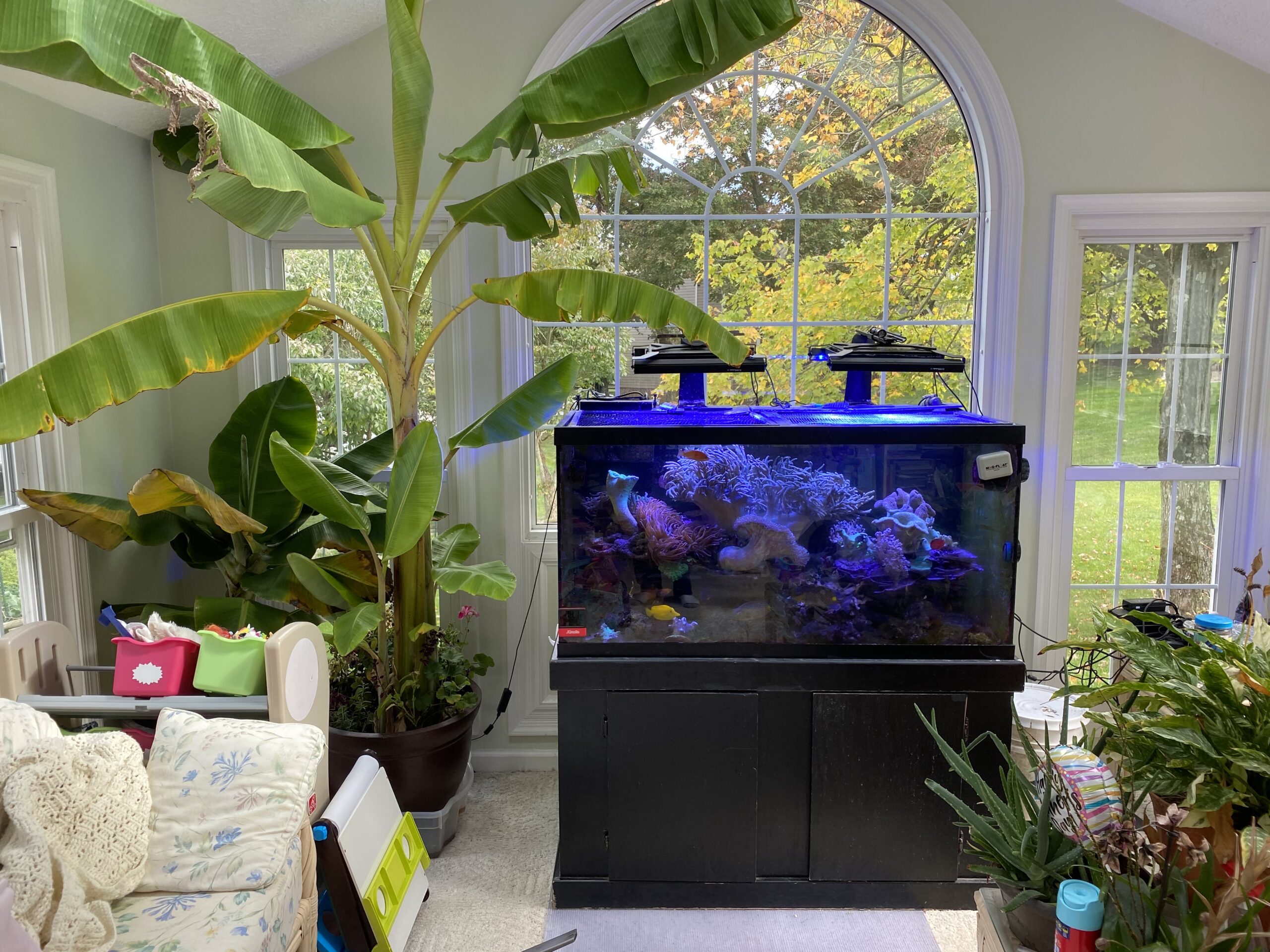When you ask someone what the most important aspects of having a reef tank are, and what really got them excited not a single individual will ever say “my tank” or “my stand”. But when you think about it without our glass box and a place to put it, we really would not have much of a hobby. Sure, you could be like Julian Sprung and set up a saltwater pond and call that your tank, but unfortunately, very few of us live where this is even remotely feasible.
After getting the general planning out of the way it is time to decide on a tank. For someone just starting out even this can be intimidating especially when it comes to size, in terms of gallons, and shape, which we will discuss. I am not even going to discuss composition, since now over 90% of tanks are made of glass, there is no reason to get into the merits of having an acrylic versus a glass tank. For me at least having had both, the problem with acrylic tanks scratching so easily outweighs any of the advantages that it might have. So for this reason I will be discussing only glass tanks.
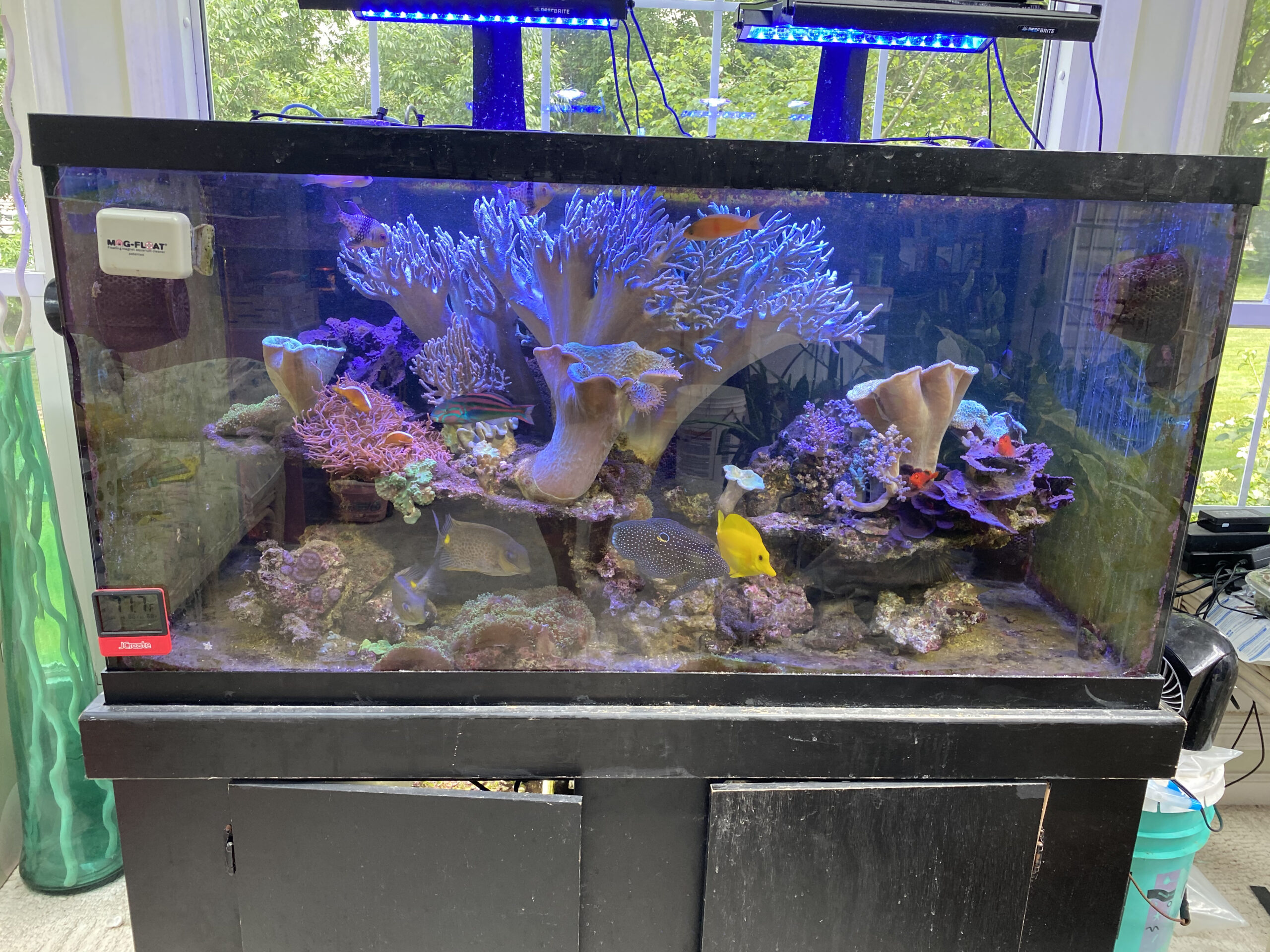
Tank size
To start with, the first and most important question is what will the size of the tank be? For most beginners, the best range of tanks is thought to be from 40 gallons to 90 gallons. These sizes are thought to be good as the 40 is big enough to not be considered a nano tank, while the 90 is thought big enough that it will provide an interesting display. I am downplaying the thought of starting with a nano tank, as even though they are small-sized they still require a significant amount of work and they are harder to keep stable than these larger-sized tanks. Which size is not an easy question to ponder, as the general rule is to get as big as you can afford and have space for.
Bigger is thought to be better as bigger tanks are typically more stable, on a cost-per-gallon basis they are cheaper, and a bigger tank allows for more fish and coral to be kept, which is what one becomes concerned with after achieving some success in the hobby. But it is not quite that simple, as other factors come into play when selecting a tank. Besides space and cost, some other questions to discuss are how often do you move, or are you planning to move in the near future. If either of these is the case, then it is probably best to choose a smaller tank. Next is how much time you have to spend on the tank. Bigger tanks typically require bigger expenditures of time for things like water changes, general cleaning, and maintenance.
And lastly, is this going to be a “family” tank where everyone helps a little or is this a one-man band type of arrangement? Obviously when more people are helping a bigger tank is just as easy as a small tank where no one is helping out. So all of this should be kept in mind when selecting the tank. In addition to size, the shape needs to be considered as well. Tanks should be at least as wide as they are tall, with wider than taller being even better. This is because when viewed from the front, providing more depth front to back allows for the tank to look deeper and fuller and the aquascaping to look more realistic when the corals are allowed to grow wider rather than just straight up.
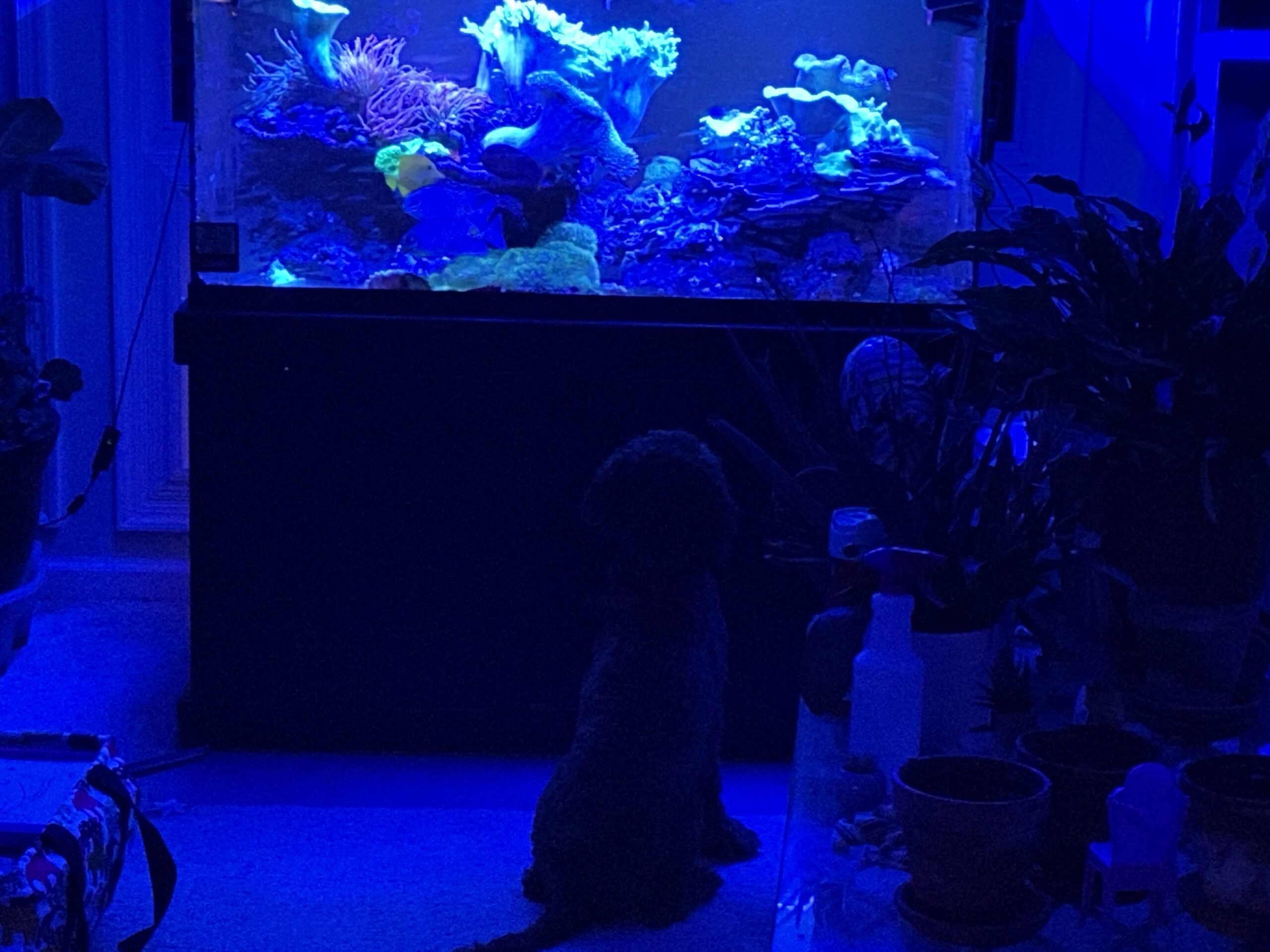
Wide is better than tall
Most of us no longer keep staghorn corals, which tend to grow vertically, but rather we keep bushy corals including most lps corals and sps corals. Fortunately, most tank manufacturers now offer tanks that conform to these goals, no longer are we restricted to the old standard 55-gallon tanks that were tall and slim. Having a tank wider than tall also allows for easier access to work in the tank and do maintenance. As mentioned in the planning article, the goal is to make things as easy and simple to do as possible as the easier things are the more likely we are to do them, and having easy access to the tank helps achieve this goal.
If thinking about the tank is one of the more neglected aspects of setting up a new tank, thinking about the stand is even more neglected. For most of us, when we think of a stand, all we think about is finding something to stick our tank on, we really do not spend much time thinking about it or its significance. This is unfortunate as choosing the right stand can make things easier in the long run and in the worst case it can even lead to the failure of our system. So, what should be considered when choosing a stand for a new reef setup? Unlike a stand that we might have gotten for a freshwater set up where the stand just had to hold the tank and the bottom was where we stored the food, medicine, and other related equipment for the tank, for a reef set up the stand not only holds the tank, but the bottom also typically houses the sump and related filtration equipment. Therefore, not only does the stand need to be sturdy, but the bottom needs to be big enough to hold all the reef-related equipment and at the same time allow easy access so this equipment can be easily cleaned and maintained.
In addition, since a reef tank is usually housed where it is readily viewed, it needs to be aesthetically pleasing so it fits in with the look of the home. The stand also needs to be waterproofed, as it will constantly be exposed to salt water and salt drip, so this needs to be done before the system is started. If this is not done, especially if the stand is made of wood, eventually the salt will eat away at the wood causing it to weaken. When this happens, the stand will start to collapse. In the best case, there will not be a total collapse, it will just gradually fall on one side or the other. Unfortunately, this can cause the tank to become stressed and if this is not corrected it can cause the tank to leak or completely fail. That is why all of these factors need to be considered when choosing a stand and why it is important.
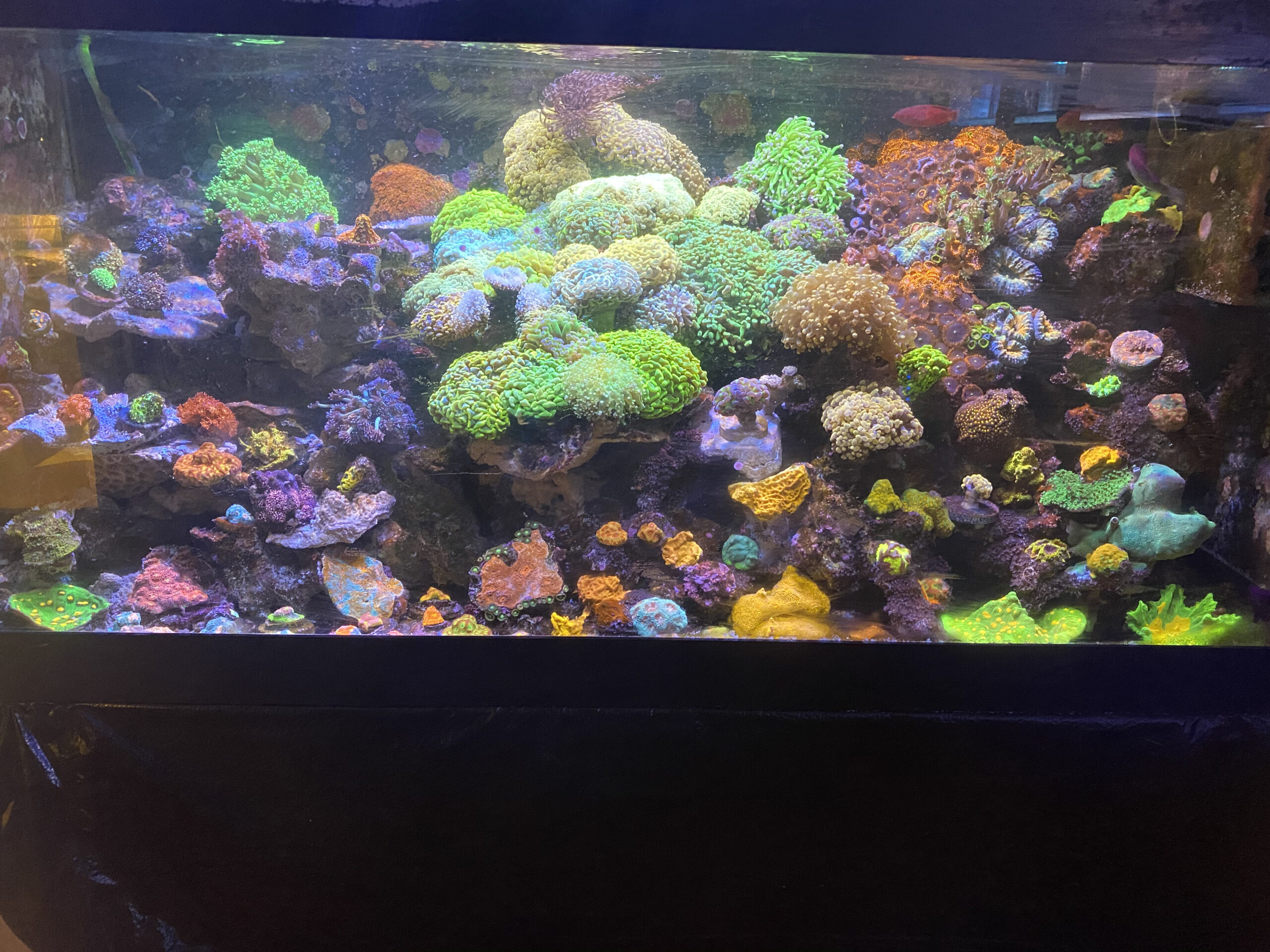
Cost
Cost is usually the first consideration when choosing a stand and most stands for tanks in the 40-120 gallon size cost between $150 and $500. While cost obviously needs to be taken into consideration, in the long run, choosing a better quality stand that will last at least a decade or more will be more cost-effective than choosing a cheaper stand that may need to be replaced in a shorter time frame. Wooded stands are usually the first choice when starting out as they are inexpensive and look sturdy. Unfortunately, more and more of them are built of particle board or plywood and as such are not built to last, especially in a saltwater environment.
If you do decide to go with wood, try to find a stand that is not made only of particle board, and in the best case has 2x2s or bigger boards in the corners to support the tank. If wood is chosen the entire inside of the stand needs to be waterproofed with epoxy or similar material and several coats should be applied. In my experience, a tank containing metal is a much better long-term choice, especially if made of aluminum, which does not rust. These are coming onto the market more and more, but it will probably be easier to find a stand made of stainless steel. It should be noted that stainless steel does rust, it just does so more slowly than wrought iron or other metals made to build stands. But even when it is made of metal, the stand should still be waterproofed.
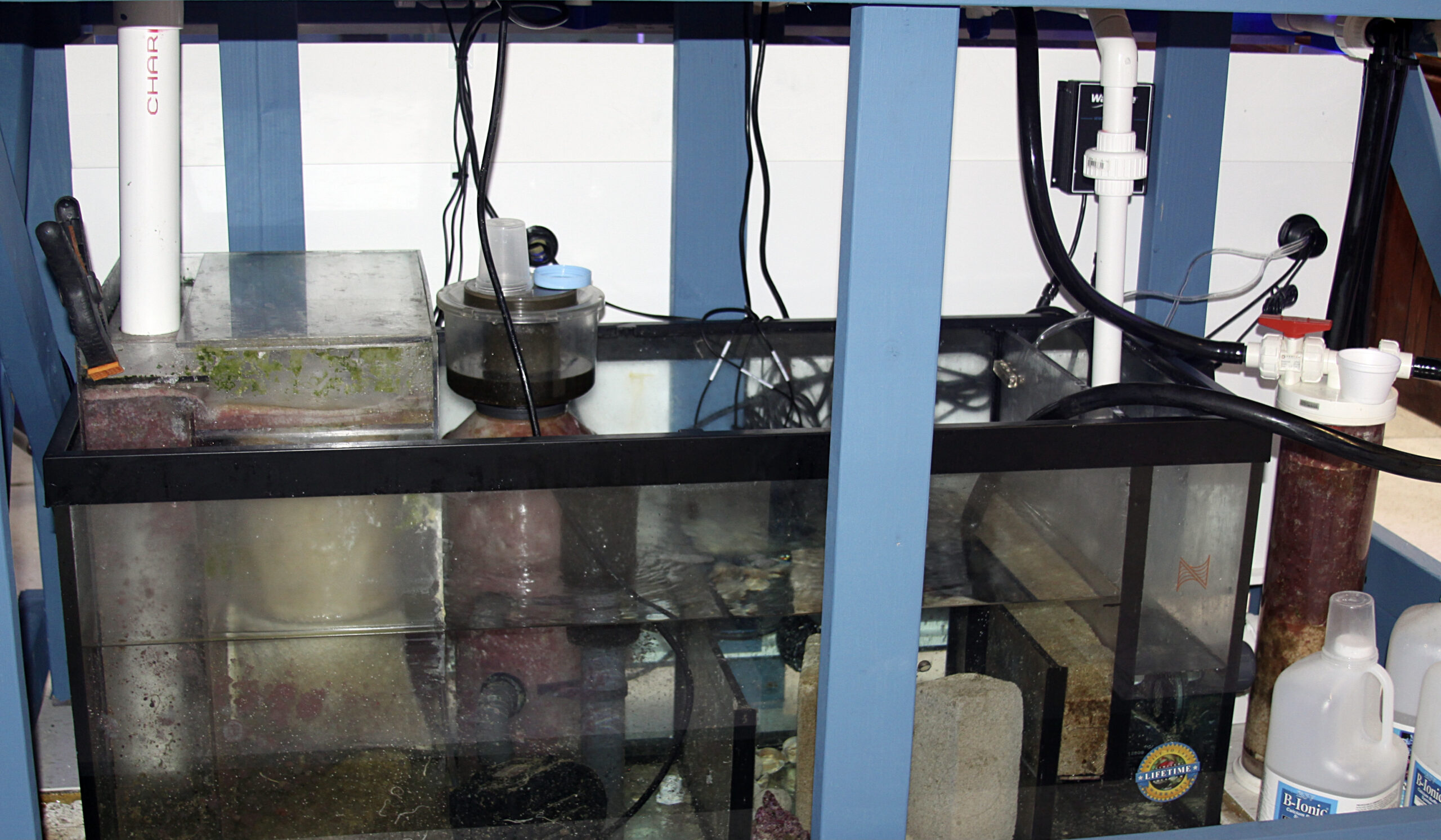
Sump-ready
While the material the stand is made of is important, a proper stand should also be selected that allows the sump and all of the filtration and other equipment to fit inside it and be hidden. This is where planning and specific measurements need to be done ahead of time to make sure the space underneath the stand is adequate. The easier it is to do things like remove the scum cup of the protein skimmer or have the ability to change out the carbon or GFO and more likely that it will be done on a regular basis. So choose the stand accordingly.
Lastly, choose a stand that not only looks good but also one that can easily be leveled. This may sound trivial, but after setting up tanks on dozens of floors I have realized just how infrequently I have encountered a perfectly level floor. An unlevel floor can result in an unlevel tank, and this can result in a tank failure. When choosing a stand consider how easy it will be to make it perfectly level if it has a mechanism for self-leveling that is great, but if not plan on how easy it will be to level if shims are needed. Either way, take this into consideration when choosing a stand. While choosing a tank and stand are not the sexiest aspect when starting a new reef system, choosing the wrong ones can make what should be a lifelong pursuit short-lived. As with everything in this hobby patience is rewarded, so take your time when choosing these, and as mentioned in the last article, plan well.


